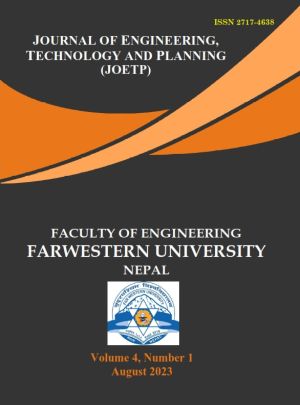Built Environment and Walkability: Investigating Urban Design Qualities by Serial Vision Method at Itahari Chowk
DOI:
https://doi.org/10.3126/joetp.v4i1.58438Keywords:
Built environment, Itahari chowk, Walkability, Serial vision method, Urban design qualitiesAbstract
The current state of Itahari chowk reflects the challenges of urban development and the prioritization of vehicular traffic. The study examines the connection between the built environment and walkability, utilizing Itahari chowk as a study area. This paper aims to quantify the degree of walkability in relation to built environment while comprehending how the built environment affects people’s walking habits and how aspects of walkability related to urban architecture are related to physical attributes. The study employs a thorough analysis of walkability coverage across four distinct spots within Itahari chowk using Gordon Cullen serial vision method. This method rooted in urban design principles evaluates four crucial qualities: Imageability, Enclosure, Transparency and Human Scale. To further refine the assessment, interview was conducted to gauge the perception of users. Respondents were asked to rank the urban design qualities based on their perceived importance and ranking data were used to determine weightage for each quality. By integrating the weighted evaluation criteria in the walkability coverage obtained through the serial vision method, a more accurate representation of actual walkability experience emerged. The findings obtained from theoretical method (serial vision method) and people’s perception (ranking method) were compared and discuss. The results of this analysis showed that people's perceptions of walkability were different from the theoretical method. The study will be beneficial to pedestrian design professionals and academic interested in this topic. Ultimately the general public will be benefit from more walkable and user-friendly street.
Downloads
Downloads
Published
How to Cite
Issue
Section
License
Copyright © Faculty of Engineering, Far Western University

